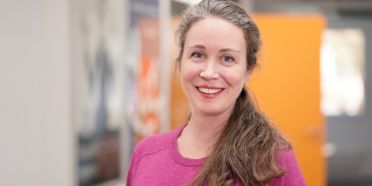Diverse neighbourhoods for everyone
The project tests the diversity-reflective opening of participation opportunities in the social space. Artistic and communicative interventions are developed in cooperation with the neighborhood population and community work.
Factsheet
-
Schools involved
Bern Academy of the Arts
School of Social Work -
Institute(s)
Institute of Design Research
Institute for Social and Cultural Diversity - Research unit(s) Social Design
- Strategic thematic field Thematic field "Caring Society"
- Funding organisation Others
- Duration 11.01.2023 - 30.06.2025
- Head of project Prof. Simone Gäumann
-
Project staff
Prof. Dr. Annina Tischhauser
Beatrice Kaufmann
Dana Pedemonte - Keywords Participationdiversity, artistic interventions, Social Design, socio-spacial Socia Work, participatory production of knowledge
Situation
The quality of life of people in the city of Bern depends to a large extent on their satisfaction with their living environment and their perception that they can influence their own living space. However, the possibility of actively shaping this living space and making a contribution to community life depends on structural access conditions as well as individual, e.g. socio-economic, preconditions, and is a particular challenge in disadvantaged neighbourhoods. In the city of Bern, there is a clear need for innovative participation opportunities for people in socially disadvantaged neighbourhoods. Existing opportunities for participation are largely supply-oriented, focus on a specific target group (e.g. migrants) and often do not reach the neighbourhood population sufficiently: the multi-layered realities of life, diverse experiences and knowledge of the heterogeneous neighbourhood population are still not promoted enough due to conventional forms of address and participation practices oriented towards the majority society. Against this background, the project "Diverse Neighbourhood for All" initiates innovative possibilities for shaping participation processes in Bern West through the collaborative development of artistic and diversity-reflective interventions and impulses and contributes to promoting understanding and participation in the neighbourhood.
Course of action
The project aims to create sustainable processes of understanding and participation through the collaborative development of diversity-reflective artistic interventions. To this end, a diversity-reflective "network for all" will be established that is close to the neighbourhood and develops diversity-sensitive participation formats that are close to everyday life and the real world. These formats are intended to promote understanding of coexistence and life relationships in Bern West and hardly heard, diverse biographical experiences and affiliations. Concerns, interests and resources in the diverse, post-migrant neighbourhood are included and flow cyclically into the development of further interventions. In this way, new spaces of opportunity for creative co-creation and forms of participatory knowledge production on living together in the diverse, post-migrant neighbourhood are to be opened up for everyone in the longer term.
Result
The interventions offered the residents of Bern West many low-threshold and sensually appealing forms of participation. The topics developed in a participatory manner in the real-world laboratory made it possible for the participants to experience the relevance of their own everyday knowledge about barriers to participation and opportunities in the district. The diverse use of visual, auditory and haptic materials and participation opportunities (including music and food) created spaces of possibility for people who previously had little networking or participation experience. The interventions implemented in the transdisciplinary network promoted opportunities for symbolic and effective appropriation of space. Making polyphony visible and audible in the social space removed barriers to participation. The interventions stimulated communication and the negotiation of a sense of unity. They also encouraged residents to recognize ambivalence in living together as a sign of polyphony and a resource for change. They generated a positive emotional response and offered important opportunities to feel addressed against the backdrop of social inequality. This strengthened solidarity, a sense of belonging and the experience of participation. Overall, diversity-sensitive interventions have the potential to initiate a transformation process in terms of approach and participation.
Looking ahead
The findings contribute to an expanded understanding of diversity- and power-sensitive knowledge production and open up tried and tested opportunities for reflection on the design of forms of participation that are close to the real world.


